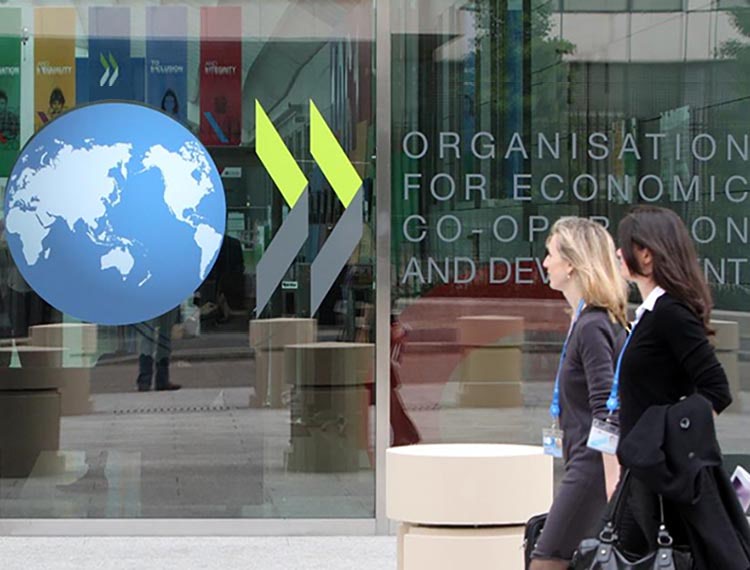UK launch of the OECD’s Education at a Glance 2019

Higher education needs to step up efforts to prepare students for the future
Demand for tertiary education continues to rise, but its further expansion will only be sustainable if it matches the supply of graduates with labour market and social needs and gives them the skills required to navigate the future, according to a new OECD report.
HEPI was honoured to host the UK launch of the OECD’s Education at a Glance 2019 in central London yesterday (10 Sept).
HEPI have listed 15 of the many stand-out facts.
In general, though not for every point, the OECD treats the UK as one educational system, despite the differences in education across the different parts of the UK.
- We are above average among OECD countries for the number of Bachelor’s students but below average for the number of Master’s students.
- The returns from UK degrees are down somewhat on recent times but they still impressive, and the cause of the decline is not a general problem but reflects challenges at the margins – for example, with some courses not all.
- The problem of young people doing nothing (the so-called NEETs – not in education, employment or training) is now ‘pretty much under control’.
- Professional experience matters less than might be expected in the UK, and less than in other countries, relative to qualifications.
- The UK is , in relative terms, very good at extracting value from the skills that people have. So there is no widespread problem of ‘overskilling’.
- Graduates from tertiary education do more lifelong learning than others. In other words, ‘learning begets learning’.
- We are top of the G7 countries for education spending. So, overall, the challenges our education system faces may have less to do with money and more to do with other things.
- Relative to other countries with high private spending on higher education (such as Japan and the US), our university system performs better on access.
- People complete their studies in the allotted time more often in the UK than in any other OECD country.
- The UK is a very attractive places for international students, despite high tuition costs.
- We are an outlier in terms of the relative spend on academic education and vocational education. We spend more per student on the former even though the latter can cost more to deliver successfully.
- Women earn less than men across the OECD, even within the same fields of study – so pay differentials are not just down to women and men choosing different routes.
- We are unusual in paying primary teachers at the same levels as secondary school teachers, which the OECD regard as a ‘good choice’.
- The UK occupies the ‘risk quadrant’ on the OECD’s chart plotting teachers’ pay and class sizes: as a result of spending choices, the former is falling in real terms while the latter is rising.
- We have the youngest teachers in the OECD. This could have some advantages – except that it is partly a reflection of older teachers leaving the profession.
Nick Hillman, the Director of the Higher Education Policy Institute, said:
Education at a Glance is the world’s best compendium of educational data. No Government wanting to improve their country’s education system can afford to ignore the document.
This year’s report reveals many striking facts about the UK. For example, early childhood provision is now almost universal, we spend more than nearly all other developed countries on education and, for good or ill, our teachers are younger than in nearly all our competitors. Unusually for a developed nation, we spend more on each child in primary school than we do on each pupil in secondary school.
There is a welcome focus on tertiary education this year. The UK numbers confirm different degrees lead to very different earnings outcomes. This will be of interest to the Treasury, but universities are right to worry about the possibility of ill-thought through policies based on such data. The UK figures also show we educate 10 per cent of all international students in OECD countries. That is a huge achievement, even though it is only half the number in the US. Spending on tertiary education is much higher than average in the UK, which is one reason why our universities top international comparisons.
As the UK stands at a crucial juncture at a time of unprecedented uncertainty, one thing is certain. Future prosperity depends on a well-resourced education system that empowers individuals and provides the skills that allow the economy to thrive.
Andreas Schleicher, Director, OECD Directorate for Education and Skills, said:
Tertiary education has seen unprecedented growth in the past decade, but there is a significant share of graduates who struggle to find good jobs, while employers say they cannot find the people with the skills they need.
The tertiary education sector needs to reinvent itself to give people greater ownership over what they learn, how they learn, when they learn and where they learn to meet tomorrow’s demand for knowledge and skills.
 In response to the publication of the OECD’s report ‘Education at a Glance’, Secretary of State for Education Gavin Williamson said:
In response to the publication of the OECD’s report ‘Education at a Glance’, Secretary of State for Education Gavin Williamson said:
Our education system is designed to deliver a quality education for young people of all backgrounds – giving them the grounding they need to make the most of their lives – which is why it is so important we get it right at every stage of their journey.
As the OECD’s findings show, we are top of the G7 for government spending on primary and secondary education, which we are boosting with an additional £14 billion in school spending between now and 2022/23. This is alongside the biggest reform to teacher pay in a generation, rewarding new teachers with one of the most competitive starting salaries in the graduate labour market.
We are determined to build on our spending record by ensuring our schools are achieving the highest possible outcomes. This means that outstanding schools will no longer be exempt from routine Ofsted inspections, schools that are consistently underperforming will receive a new programme of school leadership support and a specialist academy trust will be created to turn around the most challenging schools.
Launching the report in Paris, Angel Gurría, Secretary-General, OECD, said:
It is more important than ever that young people learn the knowledge and skills needed to navigate our unpredictable and changing world. We must expand opportunities and build stronger bridges with future skills needs so that every student can find their place in society and achieve their full potential.
Education at a Glance 2019, which is part of the Organisation’s “I am the Future of Work” campaign, finds that 44% of 25-34 year-olds held a tertiary degree in 2018, compared to 35% in 2008, on average across OECD countries. The employment rate of tertiary-educated adults is 9 percentage points higher than for those with upper secondary education and they earn 57% more.
However, some sectors in high demand may struggle to find the skills they need. Less than 15% of new entrants to bachelor’s programmes study engineering, manufacturing and construction and less than 5% study information and communication technologies, despite these sectors having among the highest employment rates and earnings. Women are particularly under-represented, making up fewer than one in four entrants, on average, across OECD countries.
Many institutions are evolving to meet changing job market demands by promoting flexible pathways into tertiary education, balancing academic and vocational skills, and working more closely with employers, industry and training organisations. But they must also balance larger enrolments with the need to contain costs, while maintaining the relevance and quality of their courses, says the report.
Between 2005 and 2016, spending on tertiary institutions increased at more than double the rate of student enrolments to about USD 15 600 per student on average across OECD countries. Private sources have been called on to contribute more as countries introduce or raise tuition fees.
This year’s edition of Education at a Glance also assesses how youth are moving from education into work, as part of its ongoing analysis of where OECD and partner countries stand on their way to meeting the Sustainable Development Goal for education by 2030. It finds that some countries have made significant progress in reducing the numbers of out-of-school youth in the past decade. Rates fell by 20 percentage points in the Russian Federation, 18 percentage points in Mexico, 16 percentage points in Portugal and 10 percentage points in Australia and New Zealand between 2005 and 2017.
The report finds that, on average across OECD countries, about one in six 15-24 year-olds are enrolled in vocational programmes. The attainment gap among young tertiary-educated adults and those with upper secondary has narrowed. In 2018, the share of young adults with an upper secondary or post-secondary non-tertiary qualification, 41%, is almost equal to the share attaining tertiary education, 44%.
Education at a Glance provides comparable national statistics measuring the state of education worldwide. The report analyses the education systems of the OECD’s 36 member countries, as well as of Argentina, Brazil, China, Colombia, Costa Rica, India, Indonesia, the Russian Federation, Saudi Arabia and South Africa.











Responses